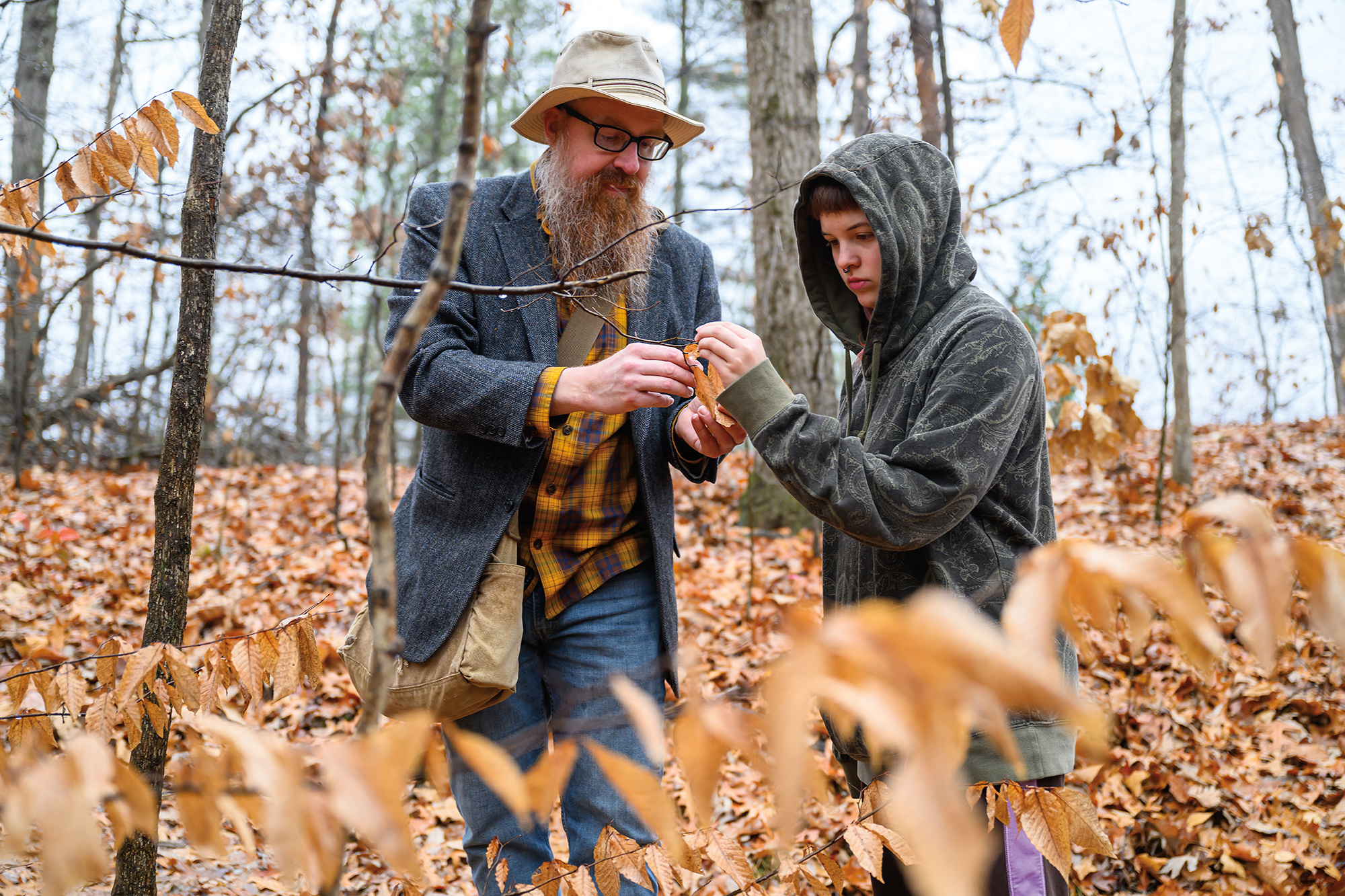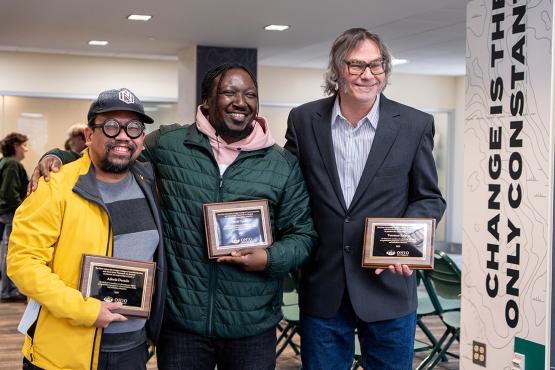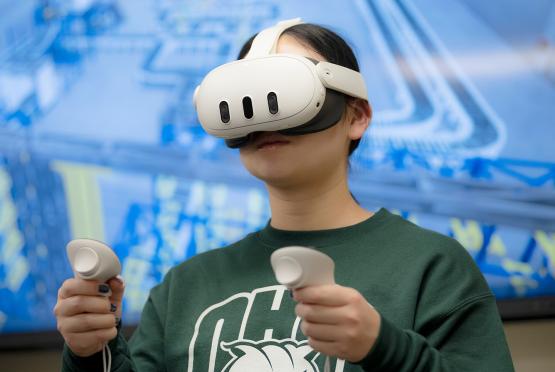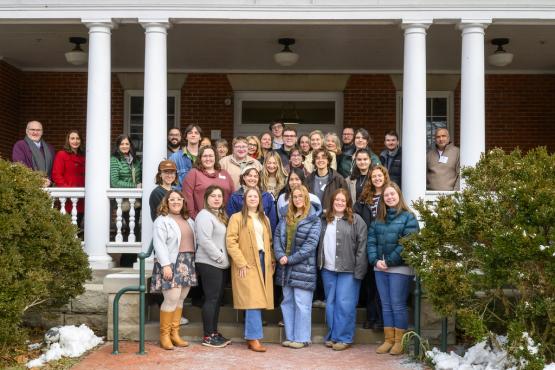
During her 2024 State of the University address, President Lori Stewart Gonzalez announced that the University would make a $2 million recurring investment to fund new faculty who would bolster OHIO’s research prominence and strengthen its academic offerings. It’s all part of OHIO’s innovative Dynamic Strategy to embrace and expand its status as a top-tier public institution of higher learning.
“Faculty are the heartbeat of the University,” says Executive Vice President and Provost Donald Leo. “They drive curricular innovation, elevate our research capabilities and ultimately inspire student success and community impact.” He is partnering with Vice President of Research and Creative Activity Eric Muth to drive success in the Dynamic Strategy’s Discover pillar, which will grow OHIO’s research enterprise.
Leo and Muth asked the University’s academic deans to propose new tenure-track faculty lines that would support the Dynamic Strategy’s research focus areas: healthy aging, energy and the environment, and emerging fields. For the latter, a cluster emerged in artificial intelligence.
Meet the 12 faculty who joined OHIO this fall to help inform its research future:
Artificial Intelligence
Dan Guralnik, Ph.D.
Mathematics Department, College of Arts and Sciences
With a Ph.D. in mathematics, Guralnik most recently served as a research assistant scientist in the University of Florida’s Department of Mechanical & Aerospace Engineering. Previously, he held postdoctoral research positions in the Electric and Systems Engineering Department at the University of Pennsylvania, and the Mathematics Departments at the University of Oklahoma and Vanderbilt University. His research interests include internal representations for AI—the information structure and storage systems that allow AI to process inputs and create meaningful outputs.
Ana Mojica Myers, MS ’08, MA ’09
School of Visual Communication, Scripps College of Communication
Mojica Myers is an information design researcher with nearly 25 years’ experience designing geographic databases and teaching geospatial science and human and environmental geography. She has taught at OHIO and Universidad Centroamericana José Simeón Cañas in El Salvador and is skilled in using AI to automate tasks for geographic characterization and exploration projects. Mojica Myers has contributed to National Geographic Magazine, the Solar and Wind Energy Resource Assessment (SWERA) for the United Nations’ Environmental Program, and numerous municipal projects in El Salvador.
Min Lun “Alan” Wu, Ph.D.
Department of Educational Studies, Patton College of Education
Wu is well-acquainted with OHIO as a current associate professor of instruction in Patton College. He holds a Ph.D. in educational psychology and educational technology from Michigan State University, with research focuses that include AI in education and educational game design, and an M.A. in Teaching English to Speakers of Other Languages (TESOL) from Tamkang University in Taiwan. He’s also given conference presentations, published journal articles and led workshops on AI’s role in education in recent years.
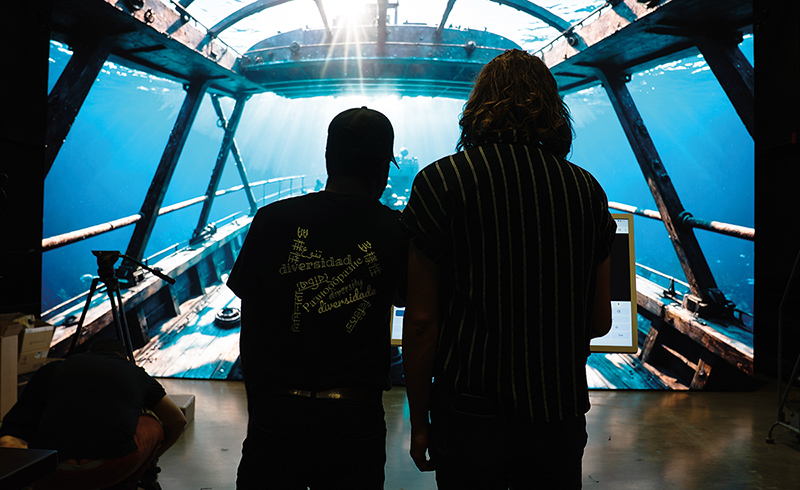
Experiential learning often aligns with the University’s research focus areas; here, media arts students use AI in their video production project. Maria Gian, BSC ’23
Healthy Aging
Kristin Chamberlain, PHD ’20
Department of Counseling and Higher Education, Patton College
In addition to her OHIO Ph.D. in counselor education and supervision, Chamberlain is a licensed professional counselor, licensed school counselor and has earned licensure with the Ohio Board of Nursing. Since 2022, she has been both an assistant professor of instruction at OHIO and a community mental health counselor at Hopewell Health in Athens, and she has been director of OHIO’s counselor education program training facility, the Hill Center for Counseling and Research, since 2023. Chamberlain also served as a neonatal ICU nurse and cardiac stepdown nurse before pivoting to pursue her doctoral degree.
Tim Etheridge, Ph.D.
Department of Physical Therapy, College of Health Sciences and Professions
Joining OHIO from the United Kingdom, Etheridge holds a Ph.D. in human exercise and environmental physiology from the University of Brighton. He has taught integrative physiology at the University of Exeter for more than a decade; he also heads a research program focused on muscle disease and optimizing adaptation to nutrition and exercise. His research grant funding since 2013 totals nearly £9,000,000 (more than $12 million USD), with nearly £7 million (more than $8 million USD) of that as a primary investigator.
Katrina Hamilton, BA ’14, MS ’18, PHD ’19
Psychology Department, Arts and Sciences
After earning her Ph.D. in experimental psychology at OHIO, Hamilton completed postdoctoral work at University of California, Irvine, and at Johns Hopkins University School of Medicine. With a research focus on chronic and biobehavioral pain, she has co-authored more than two dozen published papers and served as primary investigator for grants totaling over $70,000, including $25,000 in funding from the National Institute on Aging for a 2022 pilot project at the University of Florida’s Center for Advancing Minority Pain and Aging Science.
Ke Li, Ph.D.
Department of Social Work, Health Sciences and Professions
Li’s social work expertise includes focuses on mental health and on older adults and aging societies; her Ph.D. dissertation expanded on her previous work to study psychological effects of social isolation in older adults. Since then, she has served as a postdoctoral scholar at the University of New Hampshire, contributing to a research project that examines intergenerational relationships and health outcomes. Li has given numerous conference presentations, co-authored to several academic book chapters, and is the co-author on nearly two dozen published and in-progress journal articles.
Aiden Payne, Ph.D.
Department of Physical Therapy, Health Sciences and Professions
Payne’s Ph.D. in biomedical engineering from the Georgia Institute of Technology and Emory University included research on balance control; postdoctoral research at Emory further focused on balance control in Parkinson’s disease. In just the last six years, he has coauthored 15 published papers on balance control as it relates to post-stroke neurorehabilitation, Parkinson’s disease, cortical responses and anxiety. He has presented his work at numerous panels and conferences and in 2021 received GIT’s BMA Mission Award for his leadership efforts and significant impact on health care.
Sarah Ramey
School of Dance, Chaddock + Morrow College of Fine Arts
With initial funding from an Albert Schweitzer Fellowship, Ramey created a dance program for adults over 50 in Columbus in 2015. Now known as Perennial Movement Group, the program includes weekly classes and a vibrant performance ensemble, The Perennials. Ramey was a member of the Liz Lerman Dance Exchange, a Washington, D.C.-based company known nationally for their intergenerational performances and community engagement. She has led movement residencies at Harvard University, St. Elizabeth’s Hospital in D.C., Ohio Veteran’s Administration sites and many retirement communities, and she has taught at Cleveland State University, Arizona State University, George Washington University and Kenyon College. Ramey holds an MFA in dance from Ohio State University.
Edward Saliba, Ph.D.
Chemistry & Biochemistry Department, Arts and Sciences
With a Ph.D. in chemistry from Washington University in St. Louis, Missouri, Saliba has most recently held a senior research assistant position in the Swiss Federal Institute of Technology’s Institute of Molecular Physical Science in Zurich and a postdoctoral research fellowship in the Francis Bitter Magnet Laboratory at MIT in Cambridge, Massachusetts. He has co-authored more than two dozen journal articles; research interests include biological applications of nuclear magnetic resonance (NMR) spectroscopy, metalloproteins and spin physics theory.
Energy and the Environment
Burcu Alptekin, Ph.D.
Environmental & Plant Biology Department, Arts and Sciences
Alptekin earned her Ph.D. in plant genetics from Montana State University. Since 2020, she has held postdoctoral research positions in the departments of bacteriology and agronomy at the University of Wisconsin-Madison. She has contributed to project design and proposal writing for grants totaling nearly $400,000 and has coauthored more than a dozen published papers, including seven for which she was the first author. Alptekin's research program at OHIO will investigate the plants’ responses to drought, space radiation, microgravity and other stressors with the goal of enhancing their stress tolerance.
Sara Salloum, Ph.D.
Department of Teacher Education, Patton College
With a Ph.D. in science education from the University of Illinois at Urbana-Champaign, Salloum has been a visiting professor of science education at OHIO since 2022. Previously, she taught at the University of Balamand in Lebanon and Long Island University in New York. Her research includes active learning in STEM education, the role of language in science education, and curriculum design to develop scientific understanding about energy, climate and the environment.
Featured photo: Environmental and plant biology professor Jared DeForest, left, examines a specimen with a student. Photo by Ben Wirtz Siegel, BSVC ’02


